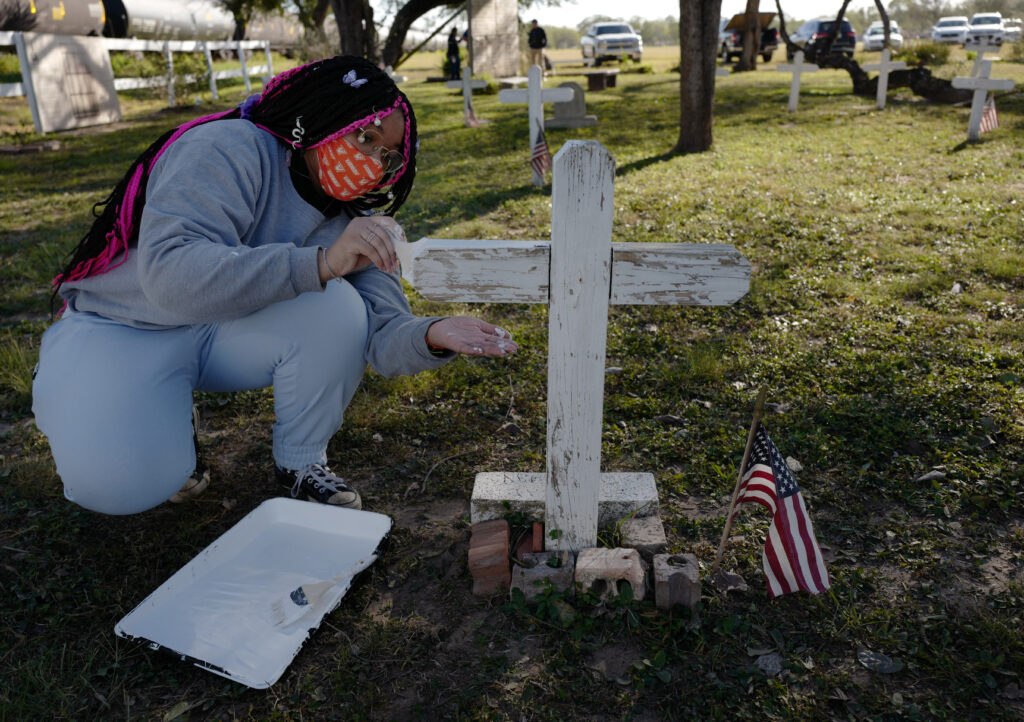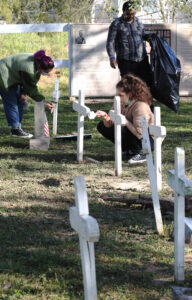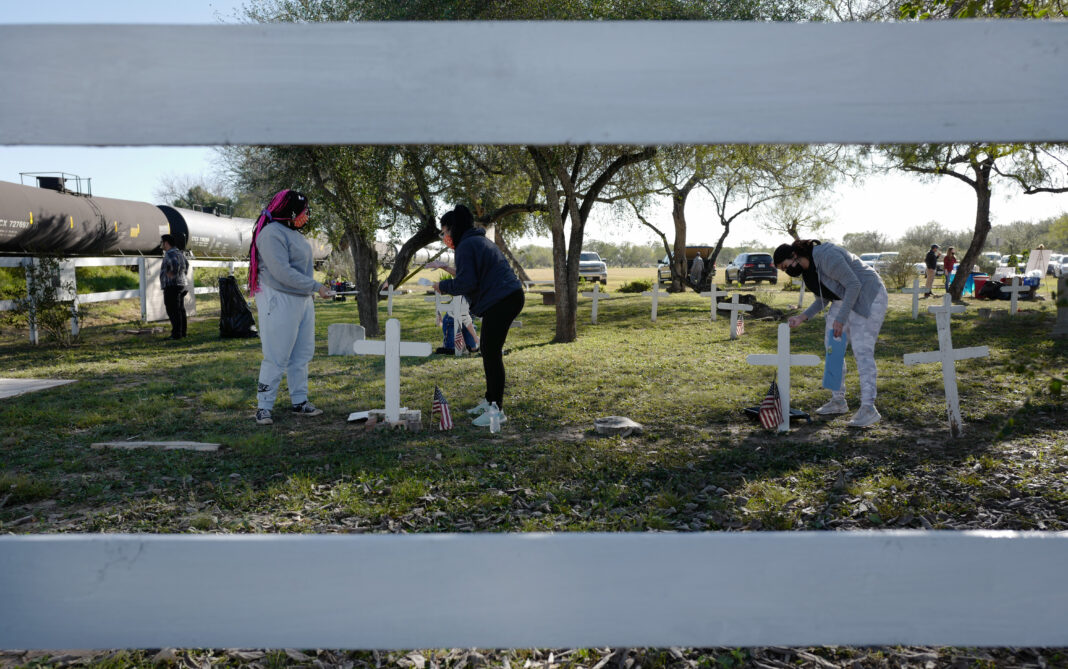EDINBURG — Despite the overnight freezing temperatures, volunteers and city officials worked together on Martin Luther King Jr. Day to clean Restlawn Cemetery in what some would consider perfect outdoor weather.

The Edinburg Juneteenth Committee, in conjunction with the University of Rio Grande Valley’s Center for Student Involvement, celebrated the national holiday by cleaning up debris, redistributing mulch in planters and repainting the fence and crosses of unmarked graves at the cemetery Monday morning.
Bishop Michael Smith opened the program with a prayer and a few words about MLK Day at 8 a.m.
“We thank you, God, for everybody that is participating to beautify this cemetery,” Smith said. “We recognize with God that it’s a work day for us, but we are working so that we may beautify this cemetery because we recognize Dr. Martin Luther King.
“Bless the hands that are working out here, bless everybody that is participating.”
Smith’s wife, Sharon Smith, said the Juneteenth Committee decided on cleaning up Restlawn Cemetery as a way to celebrate MLK Day during one of their monthly meetings.
It was important to the committee to choose an outdoor activity because of the rising numbers in COVID-19 cases throughout the Rio Grande Valley, and the committee felt it was the best way to keep everyone safe while still celebrating King’s legacy.
According to Smith, the event sort of fell into place.
Sabrina Walker-Hernandez, a committee member, suggested the service project after receiving a call from Mabel Cortina-Matos, the assistant director for the Center for Student Involvement.
Cortina-Matos was looking to get students involved in a community service project, which coincided with Walker-Hernandez’s idea of cleaning up the cemetery.
“I called [Cortina-Matos] back and said we can do it from 10 until 12 (o’clock), but then she called back and said we want to do it from 8 to 12, and I said OK,” Smith said with a laugh.

Because students and volunteers were finally able to participate in person this year, Cortina-Matos said the center, which helps students engage with the community, wanted to make sure to give them a “real service opportunity” but to also keep everyone involved safe.
It was during her research for a project that she found out about the cemetery’s historical significance.
Dee Lopez, who is part of the Hidalgo County Historical Commission, gave everyone in attendance Monday a brief history of its inception.
According to Lopez, people of African descent working in South Texas didn’t have a place to bury their dead due to segregation, and one woman set out to change that.

In the 1920s, Dora Walker, who worked as a cook for a board member for Hillcrest Cemetery, which is located next to what today is Restlawn Cemetery, asked her boss if there was a lot where they could bury the dead. And much to her surprise, the Hillcrest board member granted her an isolated corner of the land.
Although it was granted on the condition that volunteers must service the cemetery without the help of Hillcrest and was named “the Colored Cemetery,” Walker was still overjoyed by the gesture.
“A church here in Edinburg, Rising Star Baptist Church, in 1994, decided that wasn’t a proper name,” Lopez said. “So, they renamed it Restlawn Cemetery.”
The church was also involved with asking the Texas Historical Commission to designate the cemetery as a cultural, historical monument in order for it to be left undisturbed or changed.
Over 60 people have been buried at the site since the 1920s, including Edinburg’s first Black postman, Lewis C. Callis, who died in 2003.




